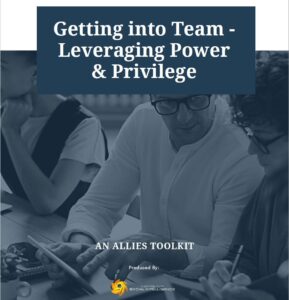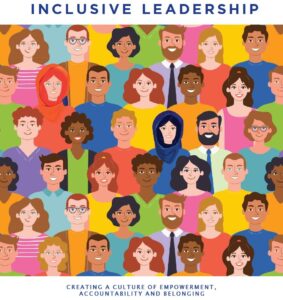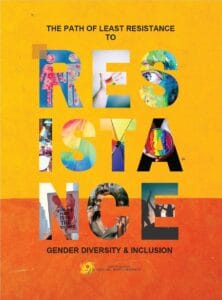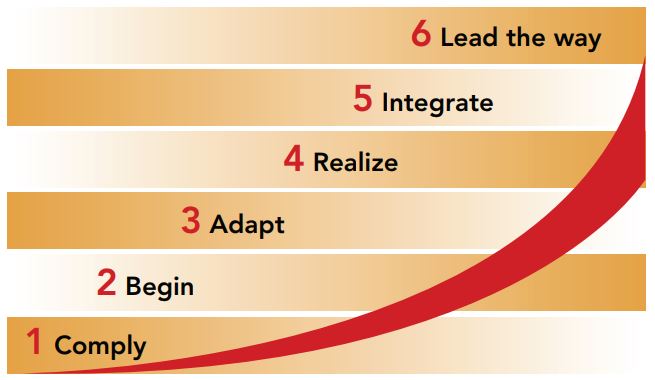If you talk with psychologists about social intelligence, they will be clear that it’s been around since Daniel Goleman introduced the term in the late 1990’s. His definition is “the ability to get along well with others, and to get them to cooperate with you.” He’s written books about leadership and the need to onboard emotional intelligence to be an effective leader including self-awareness and “doing the right thing” even though it may not be the most favourable thing. I agree with this wholeheartedly, however, since it was introduced, little has changed in organizations to shift this conversation and make social intelligence mainstream.
I think there is general agreement out there that businesses should be nurturing healthy and respectful organizations but when it comes to actually doing something about it, many don’t know where to begin.
Social intelligence as I define it is when an organization acknowledges, addresses and invests in the social issues such as gender diversity and inclusion, mental health, and intergenerational issues. By doing so, it creates a greater return on investment from employees, yielding higher productivity and thereby increasing the bottom line. This is achieved through a systematic cultural shift in the way an organization is led and operated.
Pulling this term of social intelligence into the sphere of corporate social responsibility (CSR) allows businesses to digest the concept in more of a bite-sized approach and provide direct application. Putting it in terms of dollars and cents is also critical for uptake by executives so they get past the idea that social issues are for non-government organizations or governments to tend to, and start realizing they can not only make a difference in society, but also with their bottom line, not to mention shine proudly in their annual reports that highlight how they meet or exceed CSR standards.
To be clear, CSR isn’t about giving money to charity, nor is it about asking people not to print emails for the sake of the environment. First and foremost, businesses exist to make profit, and this isn’t meant to change as a goal. The reality is that no organization operates in isolation; there is interaction with employees, customers, suppliers and stakeholders. CSR is about managing these relationships to produce an overall positive impact on society, whilst making money. In my view, weaving social intelligence into the CSR context is where the rubber hits the road on making a difference in an organization.
Gender diversity is on the list of CSR expectations. And I believe mental health and harnessing younger generation thinking and approaches to doing work should also be a part of this umbrella theme, motivating organizations to become more agile and dynamic. By doing so, they will be seen to be responsive to these key issues and people will be more inclined to want to work there. But how does one do this?
Taking these three social issues of gender diversity, mental health and intergenerational issues, we need to apply a change framework that systematically walks organizations through the implementation of specific tools that will increase their social intelligence: awareness (or the mindfulness to understand the need to address these issues); desire (creating the motivation to do something with these issues); knowledge (providing research and facts to substantiate the need to do something about these issues); ability (creating the capacity to implement actions) and finally reinforcement (making it sustainable so it isn’t a “one off” project). These tools, combined with training on emotional intelligence skills like empathy, active listening, trust, respect, and self-awareness are the nuts and bolts needed to shift an organization from employees who clock in and out, to agents of change that feel supported and respected, and are engaged and motivated about their work.
Examples of actions that could be implemented include eliminating the unconscious bias (be it for gender diversity, mental health, or the younger generation) or creating a policy for psychological safety (as we have for physical safety) to ensure people feel comfortable speaking up to their superiors. There are many actions to be implemented and it will depend on the context of your particular organization as to what should be done.
I believe there is a moral imperative for leaders to use their visionary capabilities and skills of integrity, open-mindedness, self-awareness, “doing the right thing” and drive, and apply that skillset to social issues. If leaders of organizations were to do so, I believe we’d see a shift in the way people feel about going to work, their level of productivity, commitment and dedication while they’re at work, and ultimately the benefits to society creating a win-win-win for everyone.






